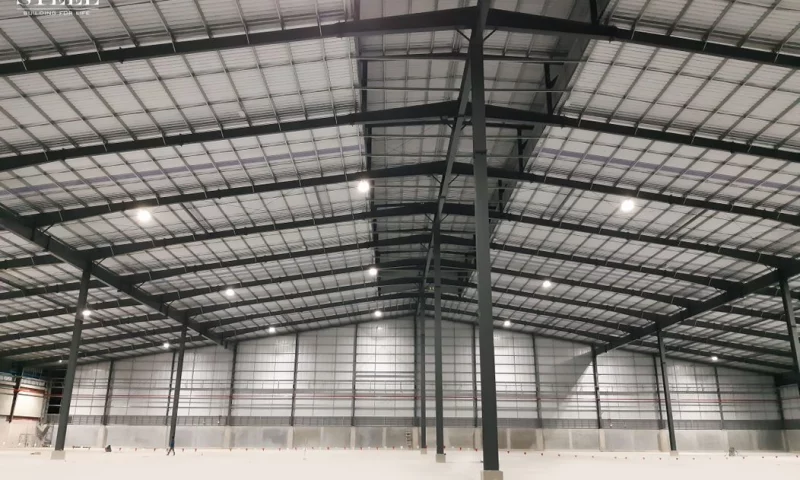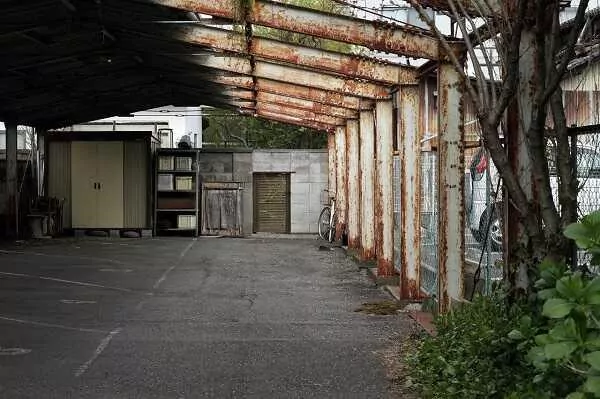Discover the key differences between pre-engineered and conventional buildings, including cost, construction time, and flexibility, in our concise comparison guide.
What are Pre-Engineered Buildings (PEBs)?
Pre-engineered buildings (PEBs) are modern construction solutions where structural components are designed, manufactured, and assembled offsite in a factory setting. These components, typically made of lightweight steel, are then transported to the construction site for assembly.
PEBs offer streamlined construction processes, significantly reducing project timelines. Commonly used for industrial facilities, warehouses, and commercial spaces, PEBs emphasize efficiency, scalability, and cost-effectiveness.

Pre-engineered buildings (PEBs) are modern construction solutions
What are Conventional Buildings?
Conventional buildings represent traditional construction methods, where structures are built onsite using materials such as bricks, concrete, and steel. Each component of a conventional building is custom-designed and constructed, allowing for a high degree of customization.
These buildings are commonly seen in residential housing, office spaces, and large-scale public projects. While they offer flexibility in design, conventional methods often require more time and resources.

Conventional buildings represent traditional construction methods
Key Differences Between Pre-Engineered and Conventional Buildings
Now come to key differences between pre-engineered and conventional buildings, we will list below:
| Pre-Engineered Buildings | Conventional Buildings | |
|---|---|---|
| Design Process | Use predefined templates and automated systems to design components. This process enables quicker and more precise planning, reducing errors and rework. | Require custom designs tailored to the specific project, often involving more complex planning and human input. |
| Construction Time | The prefabrication of components allows PEBs to be constructed in weeks rather than months. | Traditional methods often require a longer timeline due to the sequential nature of onsite construction activities. |
| Cost Comparison | Generally have lower upfront costs due to reduced material wastage and labor efficiency | With their tailored designs and material usage, they often incur higher initial expenses. |
| Long-Term Costs and Maintenance | Are easier to maintain, with components designed for durability and minimal upkeep. | May require more frequent repairs due to the susceptibility of traditional materials to wear and environmental damage. |
| Energy Efficiency and Cost Implications | Often more energy-efficient due to advanced insulation and design technologies | Less energy-efficient |
| Material Usage | Lightweight steel and prefabricated components, which are eco-friendly and recyclable | Use heavier materials like concrete and bricks, which are less sustainable and harder to recycle |

Key Differences Between Pre-Engineered and Conventional Buildings
Applications of Each Building Type
Pre-engineered and conventional buildings have different applications too:
| Pre-Engineered Buildings | Conventional Buildings |
|---|---|
| – Warehouses and storage facilities.- Manufacturing plants. – Sports complexes and large-span structures. | – Residential housing and apartments.- Office buildings and skyscrapers. – Educational institutions and public infrastructure. |

Applications of Each Building Type
Advantages of Pre-Engineered Buildings vs Conventional Buildings
- Pre-Engineered Buildings: Speed, cost, and efficiency.
- Conventional Buildings: Customization and aesthetic potential.

Advantages of Pre-Engineered Buildings vs Conventional Buildings
How to Choose Between Pre-engineered and Conventional Buildings
The decision between PEBs and conventional buildings depends on many factors:
| Pre-engineered building | Conventional Buildings | |
|---|---|---|
| Purpose | Industrial or commercial projects | Residential projects |
| Budget | Cost-effective for those seeking affordability and speed | Suit those with larger budgets for bespoke designs |
| Timeline | Ideal for projects with tight deadlines | Accommodate flexible schedules |

How to Choose Between Pre-engineered and Conventional Buildings
The choice between pre-engineered buildings and conventional buildings ultimately hinges on project-specific needs, including design preferences, budget, and intended use.
While PEBs excel in efficiency, cost savings, and sustainability, conventional buildings remain unmatched for aesthetic customization and traditional architecture. By evaluating these factors, stakeholders can make informed decisions that align with their construction goals.
For comprehensive solutions in pre-engineered building, please contact Pebsteel via email at [email protected] or phone at (+84) 908 883 531 for immediate assistance!












